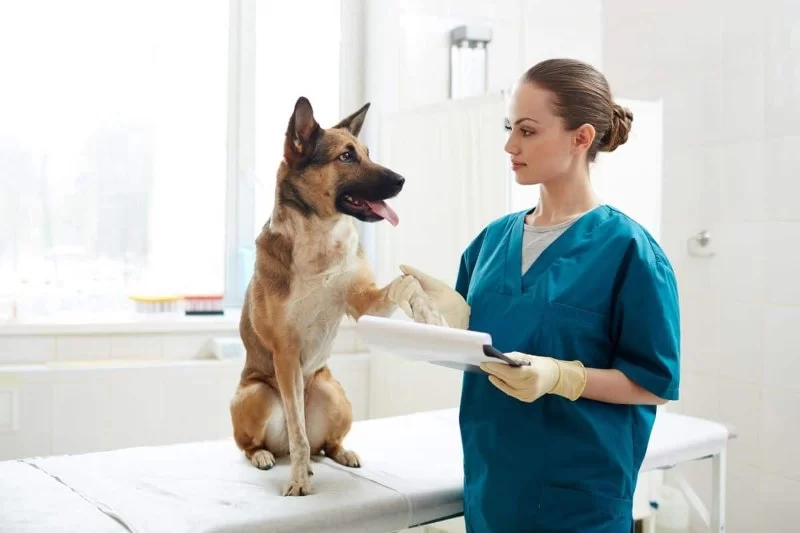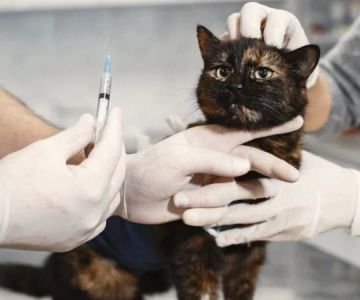A Veterinarian is Interested in the Average: Understanding Key Metrics in Pet Care
- Why Veterinarians Are Interested in Averages
- Important Health Metrics for Pets
- How Veterinarians Use Averages to Guide Care
- Real-Life Examples of Using Averages in Pet Care
- Why Hidden Brook Veterinary Is the Right Choice for Your Pet's Health
Why Veterinarians Are Interested in Averages
When it comes to assessing your pet's health, veterinarians often rely on averages and benchmarks as a guide. These averages help them understand what is typical for a pet of a certain breed, age, and weight. By comparing your pet's data to these standards, they can identify whether your pet is healthy, underweight, overweight, or potentially at risk for specific diseases. Averages provide a baseline that veterinarians use to track your pet’s progress over time and to make informed decisions about their care.
For example, a veterinarian might use the average weight for a particular dog breed to help determine if your pet is gaining or losing weight too quickly. Similarly, understanding average heart rate, temperature, or respiration rate can help them detect underlying issues before they become serious.
Important Health Metrics for Pets
To fully grasp how veterinarians use averages, it’s important to understand the key health metrics that are monitored in pets. These metrics offer valuable insights into the pet's overall well-being and allow for timely interventions when something is amiss:
1. Weight
One of the most important health metrics that veterinarians monitor is a pet's weight. A sudden gain or loss can indicate various health problems, such as an underlying medical condition or poor diet. For instance, obesity is a growing concern among pets, particularly dogs. Keeping an eye on weight and comparing it with breed-specific averages helps veterinarians create personalized nutrition plans and recommend appropriate levels of exercise.
2. Heart Rate
Heart rate is another critical metric. For most pets, average resting heart rates vary by species, breed, and age. For example, a dog's heart rate can range from 60 to 140 beats per minute depending on size and age. If a pet's heart rate falls outside these averages, it could indicate a heart condition or stress, requiring further examination and potentially urgent care.
3. Temperature
A pet's body temperature is another important indicator of their health. The average temperature for most cats and dogs is between 101 and 102.5°F. A sudden increase or decrease in temperature can indicate an infection, inflammation, or other health issues. Veterinarians often use these averages to assess whether a pet is suffering from fever, hypothermia, or another condition.
How Veterinarians Use Averages to Guide Care
Veterinarians use averages in various ways to guide their care and treatment decisions. By comparing a pet's individual health metrics to established averages, veterinarians can determine if there are any areas of concern that need addressing. For example:
1. Comparing Weight to Breed Standards
If a veterinarian notices that a dog’s weight is significantly higher than the breed’s average, they may recommend a weight management plan, including a dietary adjustment and exercise regimen. Conversely, if a dog is underweight, the veterinarian might suggest additional tests to rule out conditions like gastrointestinal problems or parasites.
2. Identifying Abnormal Heart Rates
If a dog’s heart rate is unusually fast or slow compared to average resting heart rates, a veterinarian may perform further diagnostic tests, such as an electrocardiogram (ECG), to assess heart health. A heart rate outside the normal range could signal arrhythmias or other cardiovascular issues.
3. Monitoring Temperature Changes
A veterinarian can use average body temperature data to spot early signs of illness in a pet. If a pet’s temperature deviates from the average range, it may indicate an infection or other health problem that requires immediate attention. For example, a temperature of over 104°F could be a sign of heatstroke or a severe infection.
Real-Life Examples of Using Averages in Pet Care
Let’s look at a couple of examples where averages helped veterinarians catch issues early and prevent more serious health problems:
1. Weight Management for an Overweight Cat
Sarah, a cat owner, noticed that her cat, Whiskers, was becoming increasingly lethargic and eating more than usual. When she took him to the vet, the veterinarian compared his weight to the average weight for his breed. It turned out that Whiskers was significantly overweight, which was putting strain on his joints and overall health. Using this information, the vet recommended a tailored diet and exercise plan to help Whiskers lose weight safely, which improved his health and activity levels.
2. Detecting Heart Problems in a Dog
John noticed that his dog, Max, was breathing more heavily than usual. When he took Max to the vet, the veterinarian checked his heart rate, which was much higher than the average for his breed. The vet ran further tests, including an ECG, and discovered that Max had an early-stage heart condition. Thanks to the early detection, Max was able to begin treatment and lead a long, healthy life.
Why Hidden Brook Veterinary Is the Right Choice for Your Pet's Health
At Hidden Brook Veterinary, we understand the importance of tracking your pet’s health metrics and comparing them to averages to ensure their well-being. Our team of skilled veterinarians uses these metrics to guide the care and treatment of your pet, providing personalized recommendations based on the latest health standards. With our expert guidance and tailored health plans, you can ensure that your pet receives the best possible care to maintain their health and happiness.
If you’re interested in learning more about how we can help track your pet’s health, visit Hidden Brook Veterinary today for more information about our services and scheduling an appointment.












